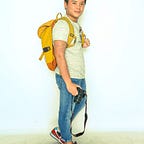Addressing the Gaze in Photojournalism
From our limited perspective, we assume that our own gaze is enough to glean a “truthful” story out of the images and stories we gaze upon. In actuality, our understanding of what we see is fueled by the narratives we carry internally. “Photograph[s add] substantiation to fictional narratives [and] narratives can add a sense of fictionality to the photographs,” writes Imbrigotta as he details the way in which our gaze acts as confirmation bias toward our internal interpretations of the world. In short, we understand the world in a certain way, and our gaze makes our subjects conform to that understanding. As photojournalists, our gaze also pushes us to pursue and portray stories that confirm our understanding of the world.
Our gaze is a problem for proper representation because it is an exertion of violence upon our subjects. The subjects we document have their own stories, contexts, cultural backgrounds and history of meanings. Because we are not privy to that history of meanings, however, we can only weave together stories based on our own interpretations of what we are seeing — our own gaze. This imposition is violence upon the subject, and it risks keeping them from being properly heard and witnessed.
I think, unless the piece were to come from the subject itself, the only option available to the photojournalist in respecting our subjects is in the careful elimination of the violence of our gaze. I don’t think we could ever truly represent our subjects if we speak with our own voice and create images through our eyes. We should accept this. But with deep dives, much time, good relationship building and a careful, caring, humble, anthropological study of those we wish to write about and photograph, we can at least get close to seeing the world through their eyes.
